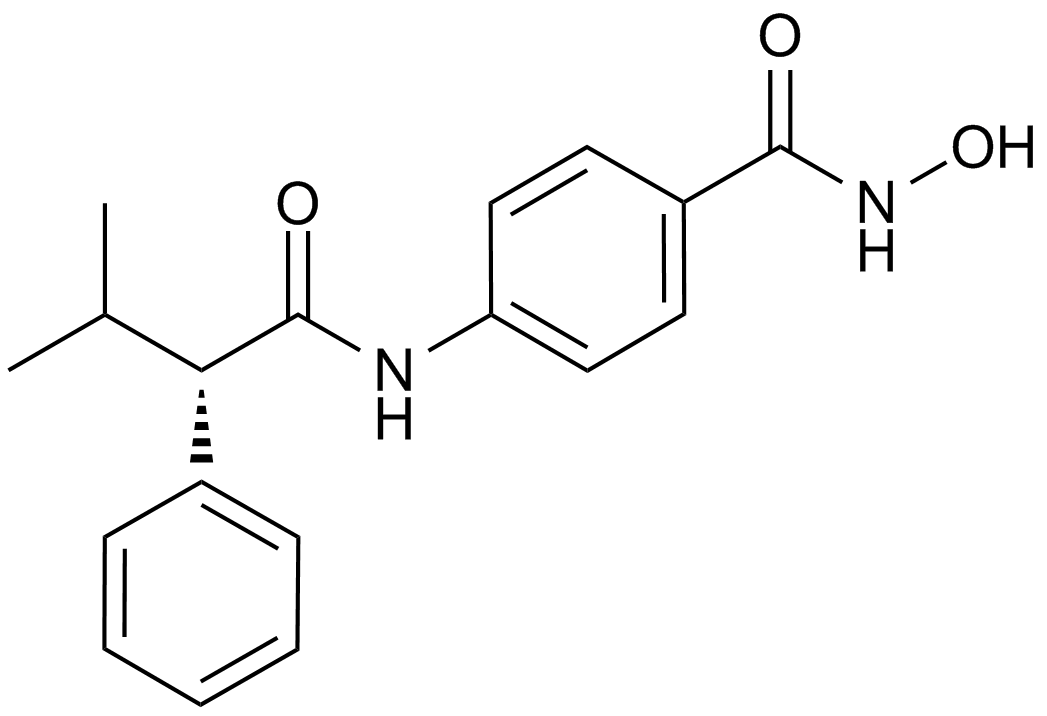AR-42 (OSU-HDAC42) |
| Catalog No.GC14590 |
HDAC inhibitor,novel and potent
Products are for research use only. Not for human use. We do not sell to patients.

Cas No.: 935881-37-1
Sample solution is provided at 25 µL, 10mM.
AR-42 (also known as OSU-HDAC42), a derivative of hydroxamate-tethered phenylbutyrate, is a novel and potent inhibitor of histone deacetylase (HDAC) that potently inhibits the activity of HDAC with 50% inhibition concentration IC50 value of 16 nM and induces histone H3 acetylation, α-tubulin acetylation and p21 up-regulation, which have been considered as the hallmark indicators of HDAC inhibition. AR-42 has been found to modulate several apoptosis inhibitors as well as cell survival regulator, including Akt, Bcl-xL, Bax, Ku70 and surviving, and exert potent antitumor activity against multiple tumor types, such as human prostate and hepatic cancers, at least partially through PI3K/Akt pathway inhibition.
Reference
[1].Matthew L. Bush†, Janet Oblinger†, Victoria Brendel, Griffin Santarelli, Jie Huang, Elena M. Akhmametyeva, Sarah S. Burns, Justin Wheeler, Jeremy Davis, Charles W. Yates, Abhik R. Chaudhury, Samuel Kulp, Ching-Shih Chen, Long-Sheng Chang, D. Bradley Welling, and Abraham Jacob. AR42, a novel histone deacetylase inhibitor, as a potential therapy for vestibular schwannomas and meningiomas. Neuro-Oncology 13(9):983–999, 2011
[2].Aaron M. Sargeant, Robert C. Rengel, Samuel K. Kulp, et al. OSU-HDAC42, a Histone Deacetylase Inhibitor, Blocks Prostate Tumor Progression in the Transgenic Adenocarcinoma of the Mouse Prostate Model Cancer Res 2008;68:3999-4009.
[3].Qiang Lu, Da-Sheng Wang, Chang-Shi Chen, Yuan-Dong Hu, and Ching-Shih Chen. Structure-Based Optimization of Phenylbutyrate-Derived Histone Deacetylase
[4].Inhibitors. J. Med. Chem. 2005, 48, 5530-5535
Average Rating: 5 (Based on Reviews and 30 reference(s) in Google Scholar.)
GLPBIO products are for RESEARCH USE ONLY. Please make sure your review or question is research based.
Required fields are marked with *




















